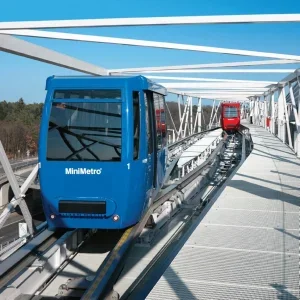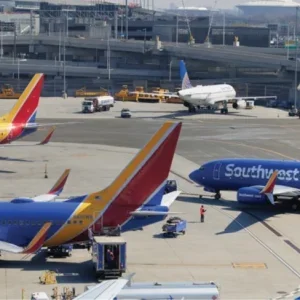Passengers encounter hundreds of independent commercial outlets as they pass through a large airport, from airlines to transport providers, retailers, food and beverage, customs and security. More than just the location in which these parties operate, airports must provide the unifying link, ensuring the end-to-end passenger experience is smooth, trouble-free and an experience they are eager to repeat.
Continuing the relationship with the passenger once they have left, though, is somewhat harder for airports to achieve. Airlines are, naturally, protective of their passenger data and so an airport’s first awareness of a passenger’s visit may be as they step through its doors.
Engaging passengers and building loyalty through effective customer relationship management (CRM) is therefore essential, but balancing the means, timing and content of communications is a delicate undertaking.
As head of ebusiness and CRM at one of the world’s busiest international airports, Heathrow’s Simon Chatfield knows this better than anyone. Under his leadership, the Heathrow Rewards programme was launched in 2013 and has since grown to become the largest airport loyalty programme globally, with 2.4 million members.
For Chatfield, central to Heathrow’s success has been its ‘single customer view’ programme, the CRM management system that has allowed it to build up a detailed picture of its customers and alter its approach to communications over time.
"The overarching thing is that we’ve not taken a ‘big bang’ approach; it’s very much been a gradual build up," Chatfield explains. "So in the past few years we’ve focused on building our single customer view, while looking at all the touch points that the customer has with the airport and gradually integrating them into a single repository of data, if you like.
"So despite the fact that we have a multitude of different service providers, we’re able to build a rich picture of that individual using booking data, shopping data, Wi-Fi data. It has been bringing that piece by piece together so that we now have that single customer view."
All about the customer base
Having an informed outlook on individual customers and its customer base as a whole has allowed Heathrow to adapt the way it communicates with passengers, developing a more sophisticated approach over time. Where once batch email was employed, Heathrow now coordinates different panels of communication tailored to individual interests, disseminated over text, email and social media platforms as the context demands.
With around 73 million passengers passing through it each year, this more bespoke approach to customers based on their past activity and retail purchases within the airport is vital. But the customer base can also be seen in terms of the passenger groups within it, which Chatfield says was key to identifying an opportunity for the loyalty programme.
"If we’re looking at our whole CRM programme, we have activities in place for [car] parkers or Heathrow Express users, or a big one is people who use our Wi-Fi service," he says.
"But we also identified that there was a group of more frequent travellers with a higher discretionary spend where we would really want to treat them differently and reward them for spending at the airport. So that’s why Heathrow Rewards was created; it is targeted at those more frequent people, and we’ve now got 2.4 million members across the globe but primarily in the UK."
Keep it simple
The premise for the rewards is simple, with members collecting points everywhere they spend within the bounds of Heathrow, whether parking, taking the Heathrow Express, or shopping and eating at the airport. Funded by Heathrow on behalf of its concessionaires, these points translate into shopping vouchers accepted throughout the airport or can be instantly redeemed in Heathrow’s biggest retailers, such as World Duty Free and Dixons, via a customer’s loyalty card.
Points can also be transferred to frequent flyer balances with around five other airlines and, through a special bi-directional partnership with Emirates initiated in May 2015, customers can import points from that loyalty scheme as well as transferring points across.
"It’s a great redemption choice for Emirates’ members, and it’s also fantastic marketing access to us, to be able to access their membership base," Chatfield explains. "But at the end of the day, it comes down to the fact that it’s what the members wanted, so that’s what we’ve been delivering for them.
"It’s about how do we keep looking at what the members are asking for and give them a little bit more, and then the other thing is how to keep it focused on the airport journey. It would be very easy for us to form partnerships outside of the airport or with non-airlines, but actually it’s about trying to keep it focused on Heathrow and when you’re visiting us."
Heathrow funds the scheme’s rewards on behalf of its concessionaires, but there is a clear return on investment in terms of the healthy aeronautical revenues it sees. The average Rewards member visits Heathrow five times a year, with a spend of around £100 a visit – more than double that of an ordinary passenger. A recent survey carried out by the airport found that the majority of members agree that the programme influences their decision to spend at Heathrow.
There are two tiers of membership, the first is standard, and the second a premium-level membership for higher spenders that offers a higher points bonus and perks such as superfast Wi-Fi within the airport.
Chatfield explains the loyalty programme enables Heathrow to stay in touch with its most frequent members and to send targeted communications based on their previous shopping habits. Use of Adobe Campaign also allows browsing data gleaned from Heathrow’s new website to be fed back into the single customer view, providing further insight on passengers’ interests and the kind of offers that might appeal.
"For example, I’ll give you bonus points if you spend £100 on this visit, because I know that last time you spent £90," he says. "So although I won’t remind you that you spent £90, it will just be that you have a tailored promotion. It’s that insight that the CRM programme provides that means we can then put promotions into the marketplace."
Maintaining a conversation with customers also allows Heathrow to discreetly market services during quieter times; for example, filling car parking spaces through targeted offers to previous users, without the need to go to the mass market with an above -the-line discount campaign.
At the touch of a button
Unsurprisingly digital is key, with a relaunched Heathrow app allowing in-app messaging, push notifications and location-specific communications, so that a passenger entering the geofence of the airport can receive time-relevant news and offers to enhance their visit.
Over and above targeted offers, though, there is an onus on dialogue and specifically dialogue relevant to that passenger. Chatfield is keen to emphasise that direct sales resulting from promotions are not the endgame – it’s about engaging customers and improving the overall passenger experience so that visitors to Heathrow feel happy, relaxed, and yes, ultimately more likely to spend.
"If you can use your CRM to improve the passenger experience, there will be revenue benefits on the back of it," he says. "If we can use the communications that we send to tell you about new security measures, to make you aware that we do sell independent lounges that might make it a more comfortable journey, well actually you’ll arrive at the departure lounge in a better, more relaxed frame of mind and then in reality the revenue will most likely flow on the back of that, because you’ll be in a better position to shop."
Within the communications that are sent, the quality and relevance of the message is critical. This means saying something fresh – and not hammering it home. Messaging has a role to play in keeping the customer engaged, particularly when he or she may not be returning to the airport for many months. Get it right and passengers will keep airport retail front of mind and even defer spend from the high street. Over-eager, repetitive or uninteresting communications, on the other hand, risk damaging the relationship.
"If you get it wrong, people will turn you off," Chatfield says. "You cannot just keep saying ‘park with us, park with us, park with us’, without saying something more; you will lose the relationship with the customer."
Chatfield says that in ensuring messages are of interest, the biggest challenge airports face is that they are not themselves the source of offers and information.
"As a landlord, we are really content consolidators rather than content generators," he says. "So whereas a supermarket can generate price-led offers, we’re kind of reliant on our concessionaires to do that for us. So the biggest pitfall is not keeping a healthy pipeline of messaging, because you’ve got to keep the customers engaged."
Good collaboration with airport stakeholders is therefore essential, but so too is experimentation and rigorous monitoring. Chatfield and his team employ a variety of test mechanisms to analyse the success of their communications. A/B testing, whereby newsletters containing slightly different content are sent to different groups to compare uptake in terms of click-through rates, is a helpful measurement tool. A 10% control group withheld from communications also provides the team with comparative insight into the behaviour of passengers left to their own devices.
"If you’re not prepared to put in some of the analytical work, then you will kill the programme relatively quickly," Chatfield says. "Every month we’re trialling something new with a communication, and moving things around in a test and seeing how that works. And clearly we don’t get it right all the time but that’s where the testing comes in."
While overkill must be avoided, Chatfield feels that with careful testing over time there is room for further communication within certain contexts. "As long as you’ve got something interesting to say, people will be warm to it," he says. "I think we can go even further in that space."






